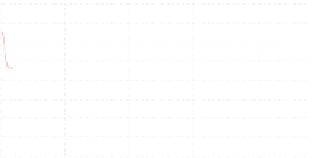Information Technology Reference
In-Depth Information
a
b
evolution of the Lyapunov function of the control loop
evolution of the Lyapunov function of the control loop
0.7396
0.746
0.745
0.7394
0.744
0.7392
0.743
0.739
0.742
0.7388
0.741
0.7386
0.74
0.7384
0.739
0.7382
0.738
0
50
100
150
200
0
50
100
150
200
t (sec)
t (sec)
Fig. 13.4
(
a
) Lyapunov function of the first test case, (
b
) Lyapunov function of the second test
case
a
b
evolution of the control in input
evolution of the control in input
0.1
0.3
0.2
0.08
0.1
0.06
0
0.04
−0.1
0.02
−0.2
0
−0.3
−0.4
−0.02
0
50
100
150
200
0
50
100
150
200
t (sec)
t (sec)
Fig. 13.5
(
a
) Control input of the first test case, (
b
) Control input of the second test case
13.6
Conclusions
The chapter has presented a gradient-based approach to feedback control of
quantum systems. Different descriptions of the quantum system dynamics were
formulated using Schrödinger's and Lindblad's differential equations, as well as
Belavkin's stochastic differential equation. When Scrödinger's equation is used to
describe the dynamics of the quantum system the objective is to move the quantum
system from an eigenstate associated with a certain energy level to a different
eigenstate associated with the desirable energy level. When Lindblad's or Belavkin's
equations are used to describe the dynamics of the quantum system the control
objective is to stabilize the probability density matrix on some desirable quantum
state
d
2C
n
by controlling the intensity of the magnetic field. The control input
is calculated by processing the measured output, which in turn depends on the
projection of the probability density matrix , as well as on processing of the
estimate of provided by Lindblad's or Belavkin's equation. It was shown that
using either the Schrödinger or the Lindblad description of the quantum system a
gradient-based control law can be formulated which assures tracking of the desirable
quantum state within acceptable accuracy levels. The convergence properties of the
gradient-based control scheme were proven using Lyapunov stability theory and
LaSalle's invariance principle. Finally, simulation experiments for the case of a two-
qubit (four-level) quantum system verified the theoretically established efficiency of
the proposed gradient-based control approach.




























































































































